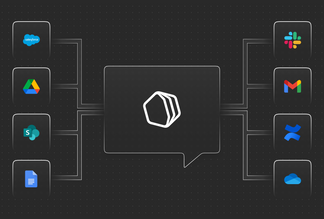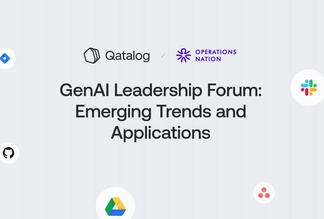
How sound could drive better (and fewer) meetings
Considering how much of an organization’s working hours are dictated by meetings, it’s difficult to admit we put near-zero effort into synthesizing or quantifying the interactions those meetings contain.
Meeting productivity, or lack thereof, is a $400 billion-dollar problem by some measures, and that might even be a conservative estimate.
Think about how many meetings you’ve been to this month that could have been an email update. Instead of taking 30 minutes out of your day, you could have found the answers on your own if your organization had a connected work hub that promoted asynchronous work.
But this isn’t the norm yet, and in a theoretical sense — most of our meetings happen because we don’t already have the answers. Ergo, the holy grail of meetings is not to need them at all.
This got me thinking about the makeup of meetings. What do we actually talk about, and how can this be analyzed to prove or disprove a meeting’s efficiency? As we see more knowledge workers increasingly move to a hybrid or remote model — we might just be able to answer those questions.
To understand a little bit more about the productivity of meetings, I spoke with Rich Maloof — Director of Programming for a political non-profit. Unlike many of us who are asked to navigate the world of virtual meetings day-in and day-out, Maloof has a background in audio engineering, which has proven critical for analyzing the patterns of his calls.
Maloof has noticed a prominence of the Rashomon effect, he told me.
The Rashomon effect describes how different people have contradictory interpretations of the same incident.
“In virtual meetings, each participant has total control over their environment, their distractions… even who they choose to focus on,” says Maloof. “One person’s experience of the meeting’s value and tone could be entirely different from another’s."
"The flip side is that virtual meetings open up so much potential for meta-communication. Going digital here means documenting conversations through audio signals, and sound engineers can read that audio. The pattern, the amplitude... all that data reveals a lot more than the average person might think. Given enough of it, one could automate organizational insights and actually improve future collaboration."
Hopefully, it might even reduce our reliance on meetings altogether.
The potential power of audio insights
What types of organizational insights can one gather from a mere sound wave? Let’s start with the low-hanging fruit and dive into the more aspirational as we imagine what impact sounds can have on our meetings’ efficacy.
1. IT & logistics
We’ve all been in a Zoom meeting where someone’s sound isn’t up to par. Maybe they have a case of robot voice, or their laptop microphone picks up immense amounts of background noise. A tool that could tie those audio issues back to a user would offer IT the ability to step in with better gear or best practices training to make that person’s participation more communicable.
2. Talking time
The person who talks the most in a meeting has an enormous impact on what value other participants get from that event. Having data on what ratio of the call time is being led by one person would help acknowledge who is being relied on too heavily and who should probably create some documentation.
3. Attendance
Paired with talking time, knowing each employee’s attendance and tardiness rates could lead to scheduling meetings more efficiently and whether the company ought to save everyone a ton of time by mandating meeting notes to marginalize low-value meeting participation.
4. Communication styles
Your coworkers may struggle to collaborate because they communicate differently. An algorithm fueled by audio geeks and linguists may be able to understand communication gaps through sound waves. Monitoring how distinctive personalities engage with others throughout the workday could unearth some wisdom on team building, meeting types, and times—even empathy and diversity training.
5. Rhythmic relationships
Suppose we’ve got personality types quantified, and we’ve already brought linguists on board to analyze audio. In that case, we may as well go the full monty: Attempting to assess the value and tone of any given meeting by reading the conversational rhythm of its sound wave. Screenwriters, therapists, and other language experts are infamous for their ability to analyze a conversation without even hearing what’s being said. People speak to each other with rhythm—and the more exciting the conversation, the more of an audio performance it tends to be.
Meetings: A thing of the past
All this new data will, of course, require coordination across productivity tools and business platforms. Thankfully, as workforce solutions advance and converge, departments traditionally dismissed as cost centers (HR, Finance, etc.) are now taking a more active role in optimizing the business—it’s no longer just the COO or CIO who can justify the value of operations layer technologies.
Interpersonal communication skills are becoming true talent differentiators in the modern workforce, and employers stand much to gain from hiring more diverse candidates. Anyone with a knack for analyzing and optimizing communication will fit into this new data puzzle. For all we know, their fresh insights could reveal more useful and engaging collaborative approaches, making standard meetings a relic of 20th-century business.




